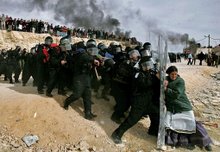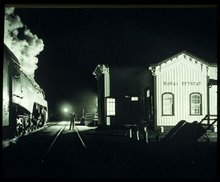 |
| Blarney Castle |
The grain is in the wood before the sawyer gets to it. It doesn't matter how you crosscut or rip or turn it, the grain reveals itself, predictably but in an unique way. The history of the wood is there to see. Such is the spirit of the Irishman and the Irishwoman. The Túatha is part of how the stock will be seen, no matter how it is turned.
Most of the history of these people came from this small island on the lefthand upper end of Europe. The people go back to the originals. How they got there is hidden in the fog of the past. It is only speculation how, but somehow Celtic and Gaelic peoples got this far from Europe. Their common trait was a language, and the Irish version of the language is spoken in no other quarter.
I am not a folklorist nor an anthropologist. I am not an expert on how these people arose, but I am an Irishman, by as many as 7/8ths of my great grandparents. My family tree is scattered with Carigans, Ryans, Allens, and Fitzpatricks. I come from Protestant Northern Ulster Irish coalminers as well as from Catholic potato famine refugees from Leinster, Munster, and Connacht. Although I did not get to set foot on Ireland's sod until my 74th year, I have been all my life part of one of the greatest diaspora in human history. Curiously, I am also part of one of the few grand derangements that approach it. That other 1/8th is Acadien from Chaleur Bay on the maritime reach of the St. Lawrence.
But let us return to the Túatha and why it is different. The Túatha, among other things, are organizational entities, social groupings of people but not ones that subverted the people to the maintainance of some organizational imperative. Most simply stated, the Túath is a social structure likely based on kinship. Its primary purpose seemed to be as a dispute resolution structure. A typical Túatha was limited in size so as not to overtax the structure. It was often limited by delineation of one or more of kinship, tribe, territory, birth and/or origin. Each Túath may have had different dispute resolution methods from other Túatha, and the constituents of one Túath were not individually bound to one Túath. A plaintif could choose any dispute resolution mechanism from whichever Túath he or she chose to join and support. But it was not unusual to see most Túatha go unchanged for trans-generational time periods.
These arrangements tended to support individual freedom. Non-binding dispute resolutions, in the form of restitution, were suggested by a Brehon. Brehon law, the term for Irish native law, was administered in Ireland down to almost the middle of the seventeenth century, among the native Irish until the depth of the English conquest. Administrative structures tended to remain as small as the structures of the Túatha themselves.
In any event, the people of Ireland were relatively relieved of oppression and suppression until the Viking invasions about 1300 years ago. Previously, there was not much call for bringing segments of the population to heel. And the Túatha were unlikely ever used for conquest. But those days were now gone. A succession of overlords influenced the veneer of Ireland. In the 12th century, the Norman invasion brought the most onerous period of foreign administration. The Irish were ruled for 800 years by interlopers from England. What does it take for a people to still want their freedom after so long? Why are the overlords so willing to be pinned down themselves to oppression and suppression for so long? I believe the answer lies in the grain of the people on both sides of the question. The pattern was likely ingrained in the Irish by the long influence of the Túatha. What compelled the British to pursue empire, apparently at all costs, lies beyond the scope of this writing. The Irish descendents of the Túatha, however, never failed to keep the flame of independence alive for nearly a millennium. Their history is on the lips of every Irish, and their modern memes still call for re-unification of Northern Ireland with the Republic of Ireland. A general cry is "32!," calling for the 6 Ulster counties to join the 26 counties of the current national configuration.
Every tour guide, from the brewhouse to the marketplace, bemoans the injustices of the British occupation, while taking a curious pride in the landmarks left behind.
We saw the multi-dimensional labyrinth of history, wherever we went through the South -- Dublin, Waterford, Midleton, Youghal, Cork, Cobh, and Kinsale. And into the west, we saw it again at Blarney, Dunloe, Killarny, and Dingle. As the trip wound down, the complexity of the past, the present, and the future played along the road through Limerick and Adare to Dunboyne (a lovely village on the northwestern edge of the Dublin conurbation).
I have been to many locales, but I don't believe I have been anywhere in which the individual is a stronger part of the common peoples' makeup. Ireland is the shockwave rider in the global economy now. Constantly reinventing itself to stay in the forefront. There is still a bastion of English oppression, however, in the 6 counties of Ulster -- a ransom that was demanded at the time that England released the rest of Ireland to nationhood in 1922 -- giving rise, as I have written above, to the frequent meme, "32!" which symbolizes the joining of the 26 counties of Ireland with the 6 counties of the Ulster Province of Northern Ireland (UK).
This is not a matter of dreams so that all Irish will become one with a collective, but that they all might live in a similar self-sustaining freedom.






No comments:
Post a Comment